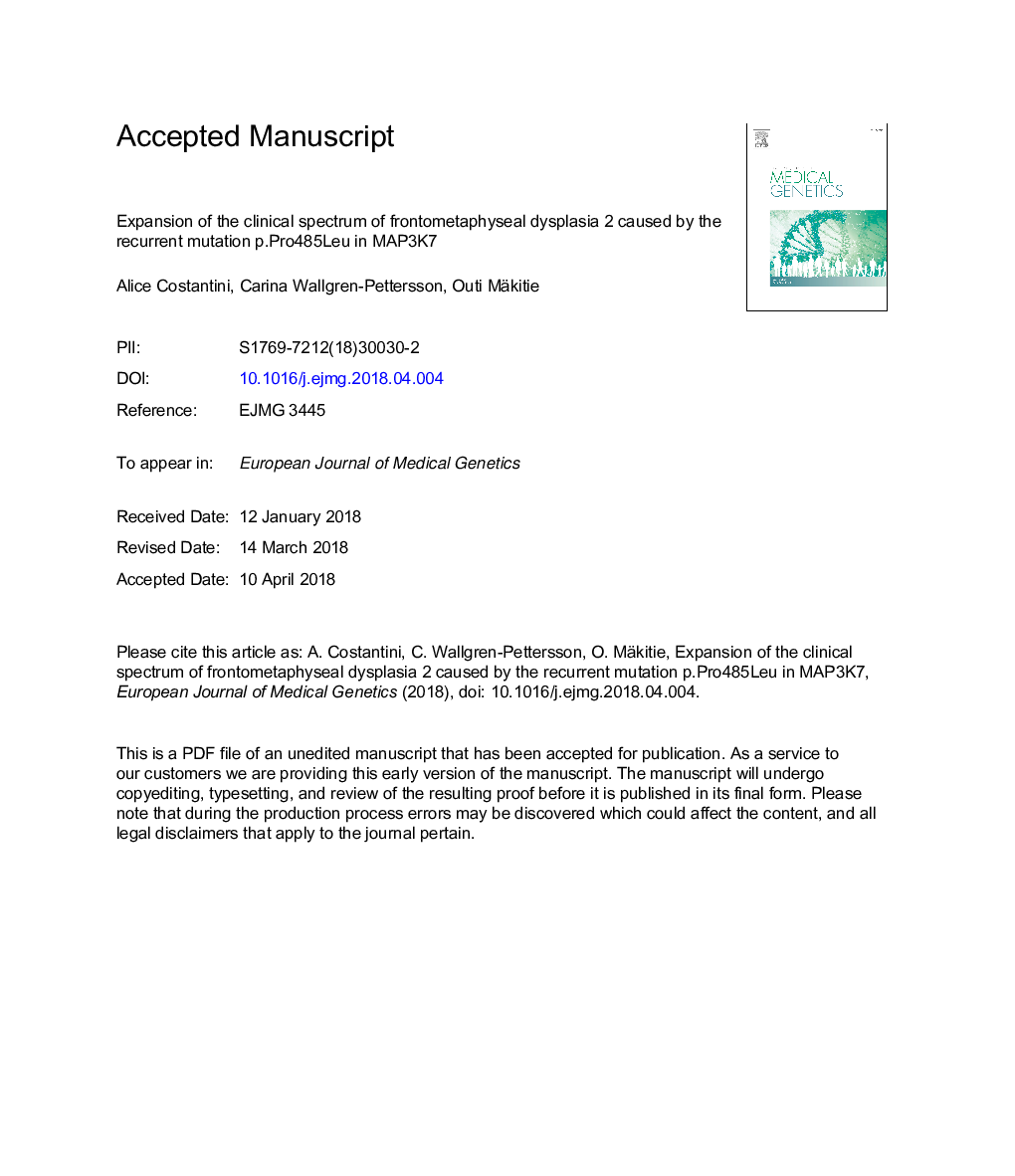| Article ID | Journal | Published Year | Pages | File Type |
|---|---|---|---|---|
| 8962720 | European Journal of Medical Genetics | 2018 | 17 Pages |
Abstract
Frontometaphyseal dysplasia 2 (FMD2) is a skeletal dysplasia with supraorbital hyperostosis combined with undermodeling of the bones, joint contractures and some extraskeletal features. It is caused by heterozygous mutations in MAP3K7, encoding the Mitogen-Activated Protein 3-Kinase 7. MAP3K7 is activated by TGF-β and plays an important role in osteogenesis. Less than 20 patients with FMD2 and MAP3K7 mutations have been described thus far. The majority of the patients harbor a recurrent missense mutation, NM_003188.3: c.1454Câ¯>â¯T [NP_003179.1: p.(Pro485Leu)], which leads to a more severe phenotype than mutations in other domains. Here we describe an additional patient with FMD2 caused by the recurrent c.1454Câ¯>â¯T MAP3K7 mutation, identified as a de novo variant by whole-genome sequencing. The 17-year-old boy has the characteristic skeletal and facial features of FMD2. However, some novel features were also observed, including growth retardation and spina bifida occulta. In line with other patients harboring the same mutation he also showed keloid scars and had no intellectual disability. This report expands the clinical spectrum of FMD2 caused by the recurrent c.1454Câ¯>â¯T [p.(Pro485Leu)] mutation in MAP3K7.
Related Topics
Life Sciences
Biochemistry, Genetics and Molecular Biology
Genetics
Authors
Alice Costantini, Carina Wallgren-Pettersson, Outi Mäkitie,
